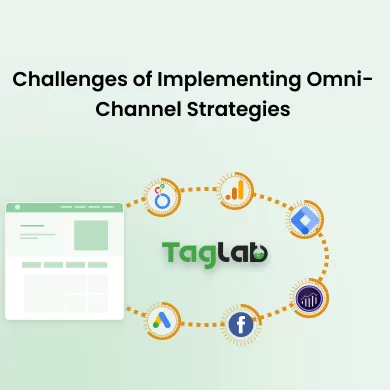Your cart is currently empty!
Event Registration Rate Metric Definition
Posted by:
|
On:
|
Event Registration Rate is a key performance indicator (KPI) that measures the percentage of invited or potential attendees who complete the registration process for an event. This metric helps businesses and event organizers understand the effectiveness of their marketing and outreach efforts in generating interest and commitments to attend.
Detailed Explanation
What is Event Registration Rate?
Event Registration Rate is calculated by dividing the number of registered participants by the total number of invited or targeted individuals and multiplying the result by 100 to get a percentage. This metric indicates how successful an event’s marketing and outreach efforts are in driving registrations.
How it Works?
Event Registration Rate provides insight into the appeal and effectiveness of the event’s promotion and the interest level of the target audience. A higher registration rate suggests successful marketing and a strong interest in the event, while a lower rate may indicate areas for improvement in outreach strategies.
Types of Registration Metrics
- Overall Registration Rate: The total registration rate for all events.
- Individual Event Registration Rate: The registration rate for a specific event.
- Segmented Registration Rate: The registration rate for specific segments, such as by event type, location, or target audience.
Illustrative Scenarios
Examples
- If 1,000 invitations are sent for a seminar and 200 people register, the Event Registration Rate is (200/1,000) x 100 = 20%.
- If a webinar targets 500 potential attendees and 250 register, the Event Registration Rate is (250/500) x 100 = 50%.
Segmentation
Analyzing registration rates by different segments (e.g., by event type, location, or target audience) can provide deeper insights. For example, comparing registration rates across different event types can help identify which formats are most engaging.
Factors Influencing Event Registration Rate
- Event Promotion: The effectiveness of marketing strategies in driving registrations.
- Event Content: The relevance and appeal of the event’s content to the target audience.
- Event Timing: The scheduling of the event, including date and time, can impact registration rates.
- Audience Engagement: The level of engagement and interest generated before the event.
- Ease of Registration: The simplicity and convenience of the registration process.
Strategies to Improve Event Registration Rate
- Enhancing Event Promotion: Implementing effective marketing strategies to drive registrations.
- Optimizing Event Content: Creating relevant and engaging content that appeals to the target audience.
- Choosing Optimal Timing: Scheduling events at convenient times for the target audience.
- Increasing Audience Engagement: Engaging with potential attendees before the event to build interest and commitment.
- Simplifying the Registration Process: Making the registration process as simple and convenient as possible.
Registration Rate Benchmarks
Registration rate benchmarks vary by industry and type of event. For example:
- Conferences: Typically have registration rates ranging from 20% to 40% due to high engagement and interest.
- Webinars: Often have registration rates between 30% and 50%, as they are easily accessible but can have lower commitment.
- Workshops: Generally have variable registration rates depending on the specificity and appeal of the content.
Comparing your event registration rate against industry standards can help gauge performance and set realistic goals.
Tools for Measuring Event Registration Rate
- Event Management Platforms: Platforms like Eventbrite, Cvent, and Bizzabo provide tools for tracking registrations and attendance.
- Webinar Platforms: Platforms like Zoom, GoToWebinar, and Webex offer registration tracking for online events.
- Customer Relationship Management (CRM) Systems: Systems like Salesforce and HubSpot track event participation and engagement metrics.
Common Pitfalls and Mistakes
- Ignoring Pre-Event Engagement: Failing to engage with potential attendees before the event can result in lower registration rates.
- Poor Event Promotion: Ineffective marketing strategies can lead to lower registrations.
- Inadequate Event Content: Unappealing or irrelevant content can deter potential registrants.
- Scheduling Conflicts: Scheduling events at inconvenient times for the target audience can reduce registration rates.
- Complex Registration Process: A complicated or inconvenient registration process can hinder registrations.
Frequently Asked Questions
What is Event Registration Rate?
Event Registration Rate measures the percentage of invited or potential attendees who complete the registration process for an event. It is calculated by dividing the number of registered participants by the total number of invited or targeted individuals and multiplying by 100.
Why is Event Registration Rate important?
Event Registration Rate is important because it helps businesses and event organizers understand the effectiveness of their marketing and outreach efforts in generating interest and commitments to attend. A higher registration rate indicates successful marketing and a strong interest in the event.
How can I improve my Event Registration Rate?
Improving Event Registration Rate can be achieved by enhancing event promotion, optimizing event content, choosing optimal timing, increasing audience engagement, and simplifying the registration process.
What factors influence Event Registration Rate?
Factors influencing Event Registration Rate include event promotion, event content, event timing, audience engagement, and ease of registration.
What is a good benchmark for Event Registration Rate?
A good benchmark for Event Registration Rate varies by industry and type of event. Conferences typically have registration rates ranging from 20% to 40%, webinars often have rates between 30% and 50%, and workshops generally have variable rates depending on content appeal. Comparing against industry benchmarks can help set realistic goals.



